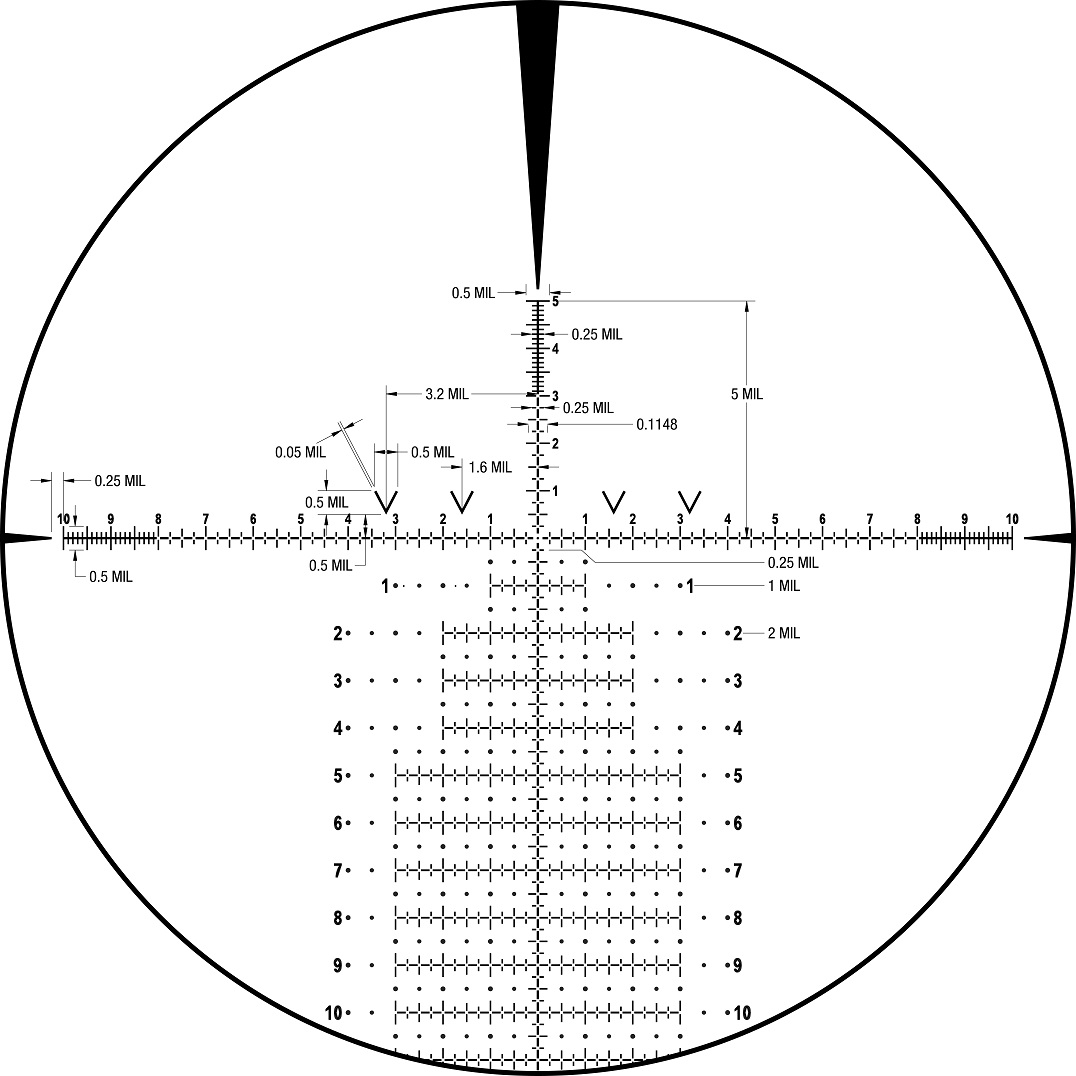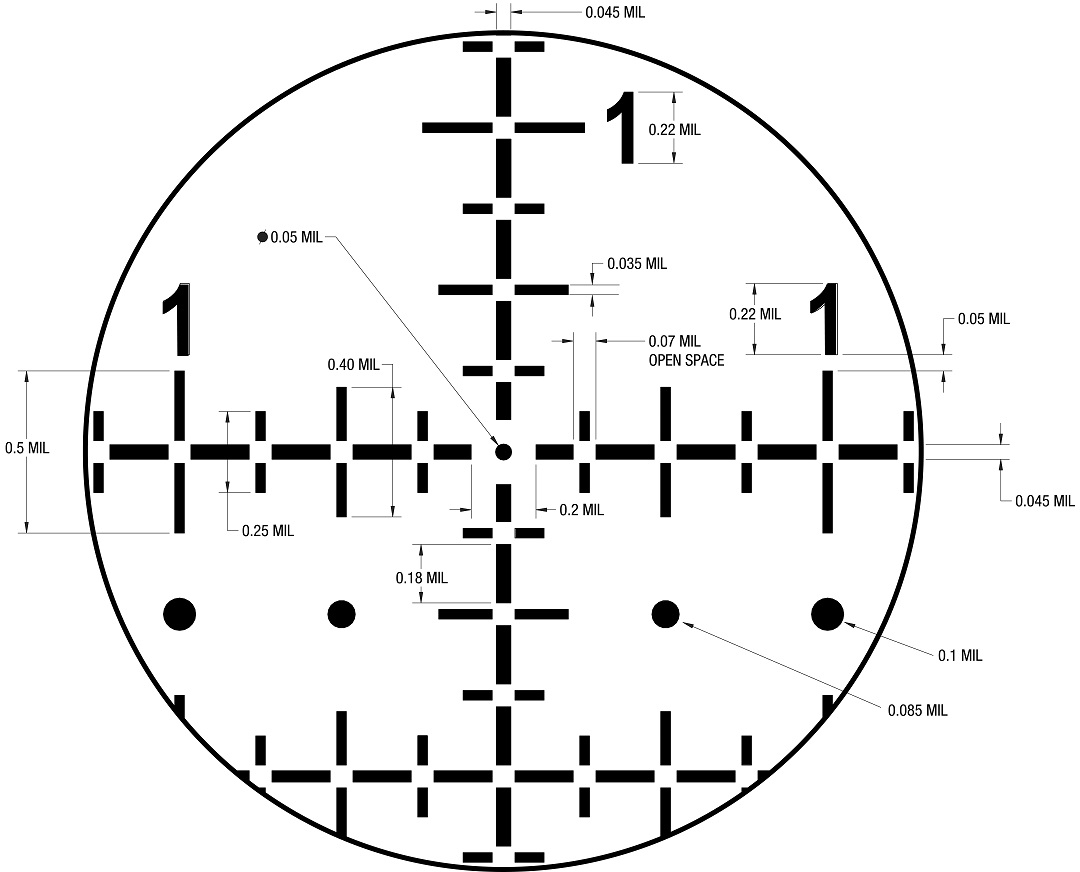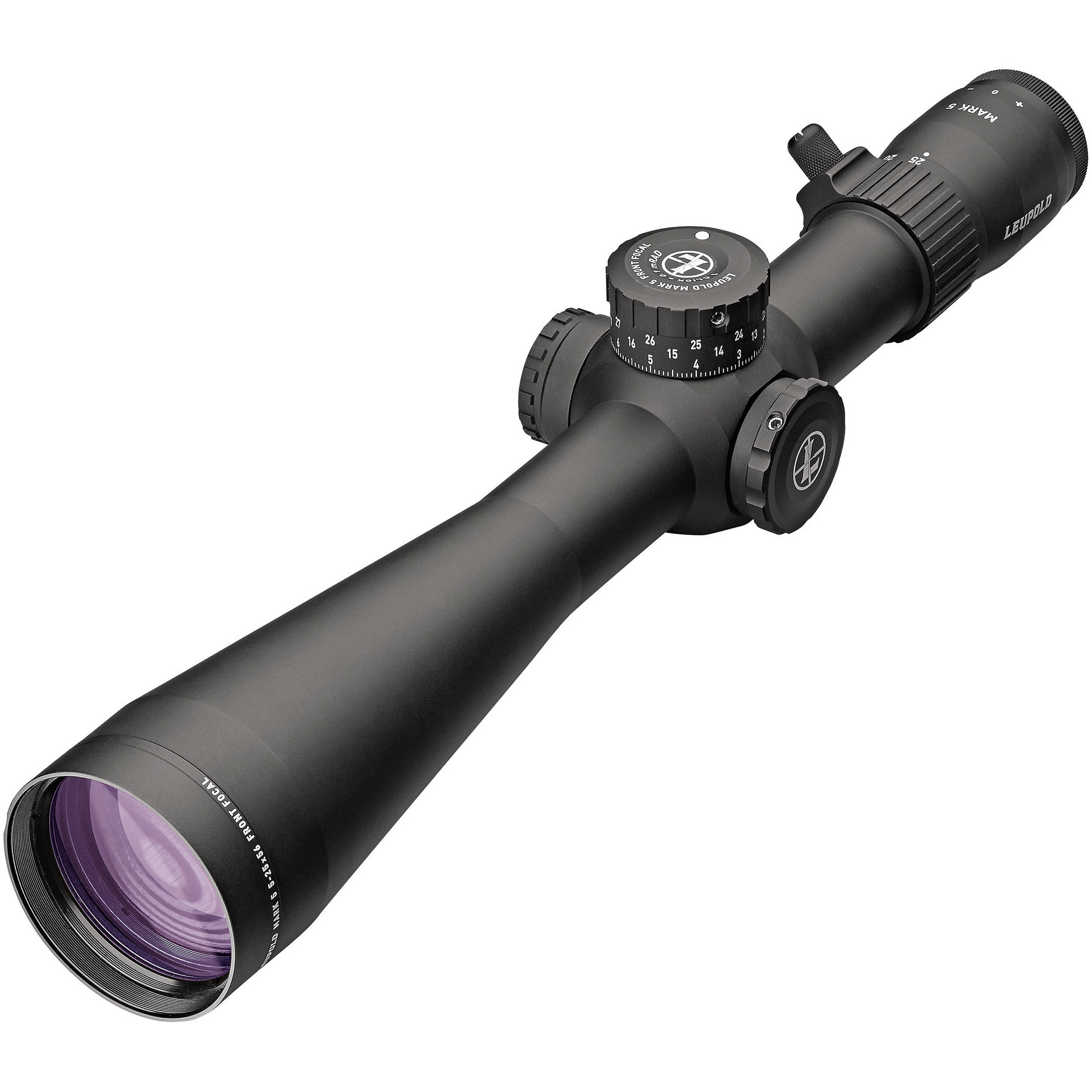I just wrapped up reviewing a Leupold 6.5-20X50 LRP and when these were first announced here on the Hide my response was a bit harsh. I’m not that big on Leupold scopes to begin with and what I initially saw appeared to be a rehashed Mk4 with a new turret. It simply wasn’t impressive and although they rolled out a new reticle, the CCH, there was next to no information about it. In fact, I had to come here on the Hide to find pictures with subtensions on it since Leupold only sent me a PDF image of the reticle, with nothing on it. So, considering my view on Leupold, when the opportunity came to take a look at one of these I was all in, thinking that it was either going to dazzle me or be just another Leupold. It turns out the results are somewhere in between. I just want you to know that I’m going to be totally open about my experiences with Leupold and the scope from start to finish.
The first LRP that arrived at my doorstep looked and felt pretty good with one exception, the reticle. One look through the scope revealed that the CCH reticle was offset in the field of view by about .5 mils, which was very noticeable. I talked to Leupold and they arranged for me to send that one back and a new one to go right out. It was disappointing to say the least but I have also dealt with this issue before on a Nightforce so it happens and I let the process take its course. About a week later the new LRP showed up at my door and this one was good go, so I mounted it on my Bergara HMR. The first thing that I did was a preliminary tracking test using a Leupold bore sighter with the rifle clamped in my bench vice. It’s not a perfect test mind you but it gives me a fixed grid that I can use as reference points to help provide an indication as to how well the scope will track ahead of a tall tracking test. Dialing through 12 mils of elevation the tracking was spot on and returned to zero perfectly so I was confident that it would do well on the tall tracking test when I hit the range. I’ll talk about the CCH reticle a little more in depth later but it’s an interesting grid-type reticle to the say the least, there are things I like about it and some things I don’t but I’ll get to that.
There were some limitations on my tall tracking test at the range based on the size the target backer but I was able to do a 10 mil test on a piece of cardboard marked out at 0, 2.5 mils, 5 mils, 7.5 mils, and 10 mils. From the center of my three shot group at zero up to the center of the group at 10 mils was exactly 36”, which reinforced the results from my bench test the day before. I had started to get a little concerned that something was off because the impacts started to trend low but it turns out my zero was just a shade low, but that was an easy correction. Now, I railed against the turret when this thing came out but it turns out to be pretty cool. To the top of the turret it’s 1.375” from the turret globe and it doesn’t get any taller when you dial in more elevation, instead the revolution indicator drops down below the cap. The revolution indicator also represents the amount of elevation dialed in that revolution so instead of seeing 1,2,3 you’ll see 5, 10, 15 representing the amount of mils. This helps figure out where you’re at in your adjustments pretty easily. There’s also an integral zero stop that’s super easy to set; once you’re zero’ed, loosen up the turret, turn it to zero, retighten, and you’re done. There’s a little wiggle in the turret that I could’ve done without but it doesn’t appear to affect anything mechanically, tracking or otherwise. After zeroing the scope I had 17.5 mils of travel, which is about right considering the 20 MOA base it was on and the listed internal adjustment range of 23 mils.

The CCH reticle at first blush is a Horus knock off but there are some distinct differences between it and say and H59 that I think makes the CCH really good under certain circumstances. The CCH is laid out in .25 mil subtensions, which at first I was like WTF did they do that for and then I thought about it some. It’s actually not that bad of an idea considering the name CCH stands for Combat Competition Hunting, where it’s probable you’ll have to make quick shots using just the reticle at some point. So, with it being .25 mil you have three hashes between each mil, which makes it super easy to bracket a target and get an accurate hold very quickly. Let’s say you need to hold 1.6 mil of wind? Yes, it would be nice to have .2 mil hashes but for some people it clutters the reticle and actually makes it harder for them to quickly find the right hold. On the CCH just bracket between 1.5 and 1.75 to give you a 1.625 mil hold and let it eat. Need 1.7? Hold 1.75 and the same goes with elevation holds too, you may not be able to get a perfect hold but chances are the difference will be negligible. The chevrons on the reticle are interesting but there’s next to no information about them other than they are 1.6 mils and 3.2 mils out from center. Doing a little math though they roughly correspond to mover holds for a target going about 3 mph and 7.5 mph, which can be useful for some. I also played around with using them as ranging guides for some common game animals and predators in North America and I was able to come up with a rough table. For example, if you bracketed a coyote broadside between the reticle and the first chevron, it would be about 590 yards away. If it fits between the reticle and outer chevron then it’s about 300 yards away. Obviously, it’s not perfect and I’m not even sure Leupold intended for the reticle to be used in that fashion but it gives you a rough guide to work in some circumstances. My one gripe with the reticle is that all of the reticle intersection with the exception of the .1 mil stadia out at the edges are open centers. I think this is what contributes to the poor ability to see the reticle below 12X since all of that open space adds up but above 12X it’s really quite nice.

Optical performance is pretty good, not great, not horrible, right in the middle where you’d expect it to be for the price I think. There’s noticeable chromatic aberration in day light against light colored targets and the clarity is just ok but it didn’t keep me from seeing and engaging my targets. While I could see impacts on steel past 800 yards I felt like the Burris XTRII that I’d been using and sold to a friend performed a bit better. At low light however, I was pretty surprised by the LRP’s performance and 15 minutes after the sun dipped behind the hill at my house I was able to make out details on a barn over 300 yards away and would’ve been able to make a shot, even without illumination. I’m sure the question about eye box will come up and I’ll say it’s tight, I wasn’t totally surprised by this given the small diameter of the ocular, it’s just something you have to deal with. In actually shooting with it though, I didn’t really notice as long as I focused on the fundamentals and kept a consistent cheekweld.
If you are thinking about using this scope for your .22, like I did at first, forget about it. I measured the parallax range at about 60 yards to infinity, which is fine for a centerfire rifle, but not so good for a rimfire, oh well.
So, my conclusions? The 6.5-20 LRP that I have carries a street price of just under $1,000, probably less than that if you sweet talk a dealer and at that rate, I think it’s a good scope. It has some features that are appealing to me, it’s lightweight (sub-22 oz), it has a zero stop, rev indicator, throw lever, first focal plane mil and MOA options, parallax adjustment, and it tracks. That’s not a half bad feature list for any scope and in this price range. It’s perfect for someone that’s just getting into long range shooting or would like a lighter scope for their rifle that won’t break the bank. I would say that the only thing it’s really missing is an illumination option but for most people that’s a non-issue. I’m very much considering keeping this scope, which surprised me too, but it’s always good to have some extra scopes in the stable and I think it pairs well with my Bergara HMR.
I'll post some pictures up later today.
The first LRP that arrived at my doorstep looked and felt pretty good with one exception, the reticle. One look through the scope revealed that the CCH reticle was offset in the field of view by about .5 mils, which was very noticeable. I talked to Leupold and they arranged for me to send that one back and a new one to go right out. It was disappointing to say the least but I have also dealt with this issue before on a Nightforce so it happens and I let the process take its course. About a week later the new LRP showed up at my door and this one was good go, so I mounted it on my Bergara HMR. The first thing that I did was a preliminary tracking test using a Leupold bore sighter with the rifle clamped in my bench vice. It’s not a perfect test mind you but it gives me a fixed grid that I can use as reference points to help provide an indication as to how well the scope will track ahead of a tall tracking test. Dialing through 12 mils of elevation the tracking was spot on and returned to zero perfectly so I was confident that it would do well on the tall tracking test when I hit the range. I’ll talk about the CCH reticle a little more in depth later but it’s an interesting grid-type reticle to the say the least, there are things I like about it and some things I don’t but I’ll get to that.
There were some limitations on my tall tracking test at the range based on the size the target backer but I was able to do a 10 mil test on a piece of cardboard marked out at 0, 2.5 mils, 5 mils, 7.5 mils, and 10 mils. From the center of my three shot group at zero up to the center of the group at 10 mils was exactly 36”, which reinforced the results from my bench test the day before. I had started to get a little concerned that something was off because the impacts started to trend low but it turns out my zero was just a shade low, but that was an easy correction. Now, I railed against the turret when this thing came out but it turns out to be pretty cool. To the top of the turret it’s 1.375” from the turret globe and it doesn’t get any taller when you dial in more elevation, instead the revolution indicator drops down below the cap. The revolution indicator also represents the amount of elevation dialed in that revolution so instead of seeing 1,2,3 you’ll see 5, 10, 15 representing the amount of mils. This helps figure out where you’re at in your adjustments pretty easily. There’s also an integral zero stop that’s super easy to set; once you’re zero’ed, loosen up the turret, turn it to zero, retighten, and you’re done. There’s a little wiggle in the turret that I could’ve done without but it doesn’t appear to affect anything mechanically, tracking or otherwise. After zeroing the scope I had 17.5 mils of travel, which is about right considering the 20 MOA base it was on and the listed internal adjustment range of 23 mils.
The CCH reticle at first blush is a Horus knock off but there are some distinct differences between it and say and H59 that I think makes the CCH really good under certain circumstances. The CCH is laid out in .25 mil subtensions, which at first I was like WTF did they do that for and then I thought about it some. It’s actually not that bad of an idea considering the name CCH stands for Combat Competition Hunting, where it’s probable you’ll have to make quick shots using just the reticle at some point. So, with it being .25 mil you have three hashes between each mil, which makes it super easy to bracket a target and get an accurate hold very quickly. Let’s say you need to hold 1.6 mil of wind? Yes, it would be nice to have .2 mil hashes but for some people it clutters the reticle and actually makes it harder for them to quickly find the right hold. On the CCH just bracket between 1.5 and 1.75 to give you a 1.625 mil hold and let it eat. Need 1.7? Hold 1.75 and the same goes with elevation holds too, you may not be able to get a perfect hold but chances are the difference will be negligible. The chevrons on the reticle are interesting but there’s next to no information about them other than they are 1.6 mils and 3.2 mils out from center. Doing a little math though they roughly correspond to mover holds for a target going about 3 mph and 7.5 mph, which can be useful for some. I also played around with using them as ranging guides for some common game animals and predators in North America and I was able to come up with a rough table. For example, if you bracketed a coyote broadside between the reticle and the first chevron, it would be about 590 yards away. If it fits between the reticle and outer chevron then it’s about 300 yards away. Obviously, it’s not perfect and I’m not even sure Leupold intended for the reticle to be used in that fashion but it gives you a rough guide to work in some circumstances. My one gripe with the reticle is that all of the reticle intersection with the exception of the .1 mil stadia out at the edges are open centers. I think this is what contributes to the poor ability to see the reticle below 12X since all of that open space adds up but above 12X it’s really quite nice.
Optical performance is pretty good, not great, not horrible, right in the middle where you’d expect it to be for the price I think. There’s noticeable chromatic aberration in day light against light colored targets and the clarity is just ok but it didn’t keep me from seeing and engaging my targets. While I could see impacts on steel past 800 yards I felt like the Burris XTRII that I’d been using and sold to a friend performed a bit better. At low light however, I was pretty surprised by the LRP’s performance and 15 minutes after the sun dipped behind the hill at my house I was able to make out details on a barn over 300 yards away and would’ve been able to make a shot, even without illumination. I’m sure the question about eye box will come up and I’ll say it’s tight, I wasn’t totally surprised by this given the small diameter of the ocular, it’s just something you have to deal with. In actually shooting with it though, I didn’t really notice as long as I focused on the fundamentals and kept a consistent cheekweld.
If you are thinking about using this scope for your .22, like I did at first, forget about it. I measured the parallax range at about 60 yards to infinity, which is fine for a centerfire rifle, but not so good for a rimfire, oh well.
So, my conclusions? The 6.5-20 LRP that I have carries a street price of just under $1,000, probably less than that if you sweet talk a dealer and at that rate, I think it’s a good scope. It has some features that are appealing to me, it’s lightweight (sub-22 oz), it has a zero stop, rev indicator, throw lever, first focal plane mil and MOA options, parallax adjustment, and it tracks. That’s not a half bad feature list for any scope and in this price range. It’s perfect for someone that’s just getting into long range shooting or would like a lighter scope for their rifle that won’t break the bank. I would say that the only thing it’s really missing is an illumination option but for most people that’s a non-issue. I’m very much considering keeping this scope, which surprised me too, but it’s always good to have some extra scopes in the stable and I think it pairs well with my Bergara HMR.
I'll post some pictures up later today.
Last edited:




